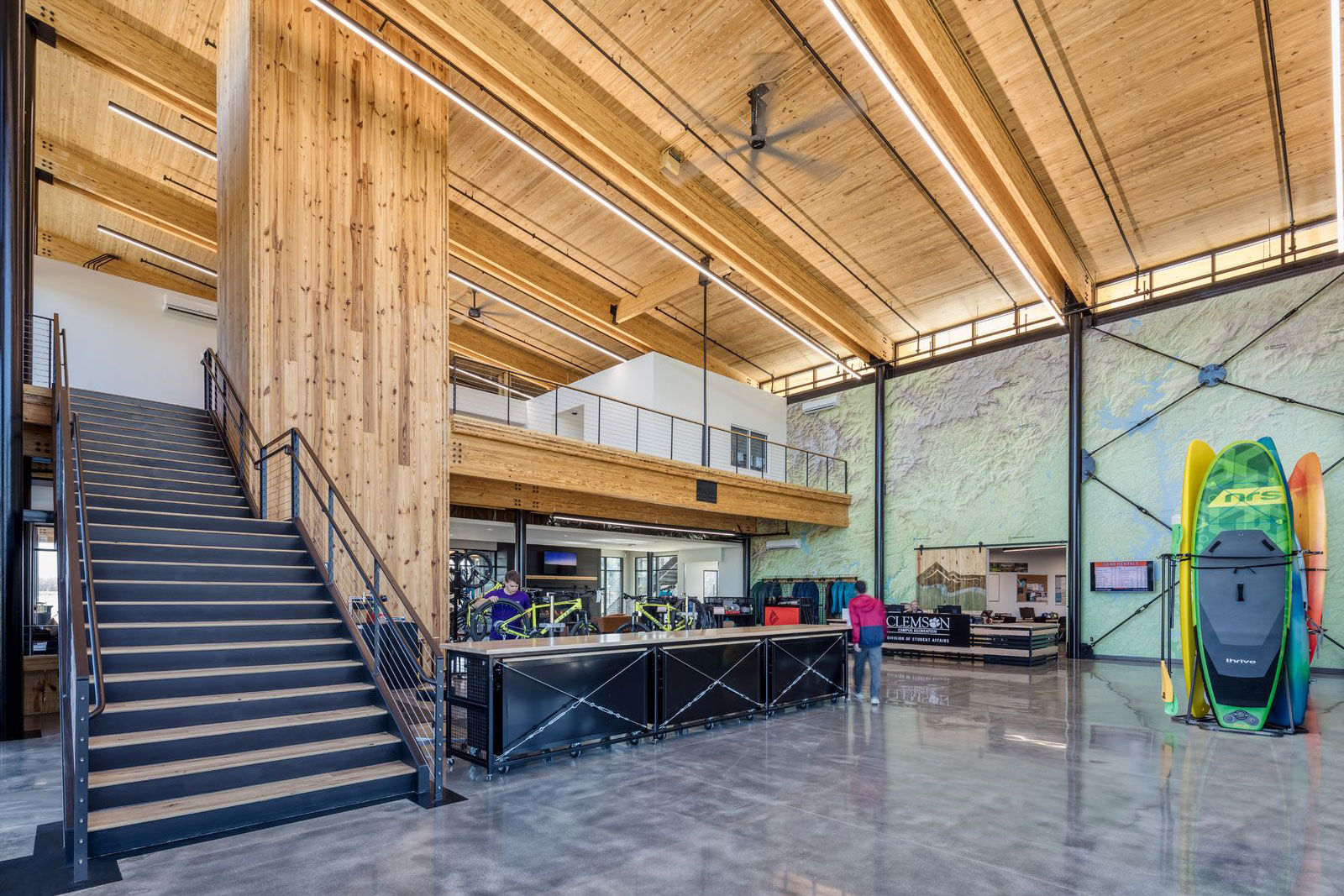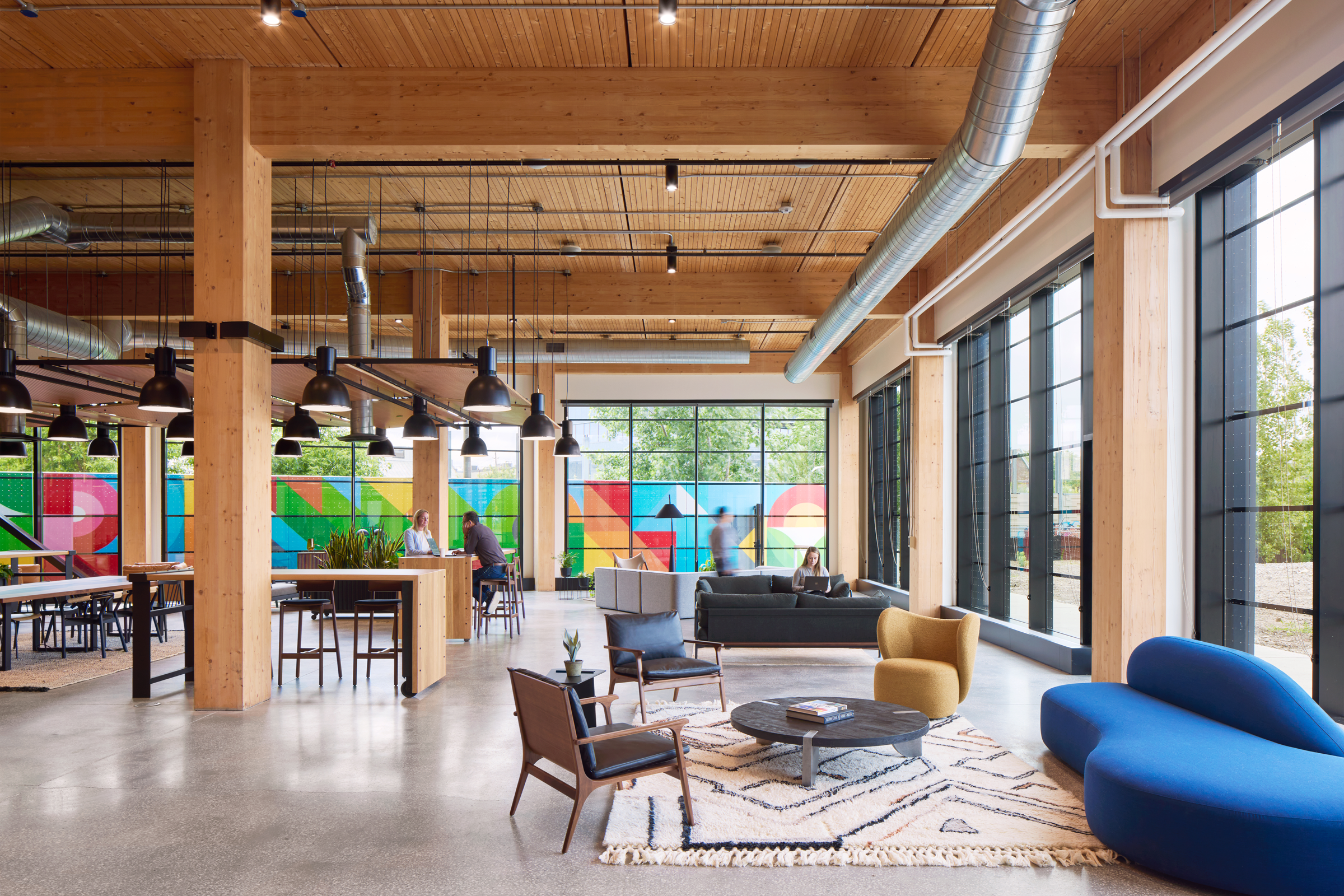Story at a glance:
- The wellness economy refers to those industries that help consumers incorporate various wellness products, services, and activities into their daily lives.
- Personal care and beauty is the largest sector of the wellness economy, followed closely by the healthy eating, nutrition, and weight loss sector.
- The wellness real estate sector is among the fastest-growing markets within the wellness economy.
Wellness has become a major priority for consumers around the world since Covid. This growing interest in wellness—reflected in consumers’ spending choices and habits—has led to the development of a robust and ever-expanding wellness economy.
This article is an introductory guide to the wellness economy and the 11 sectors it encompasses.
What is Wellness?
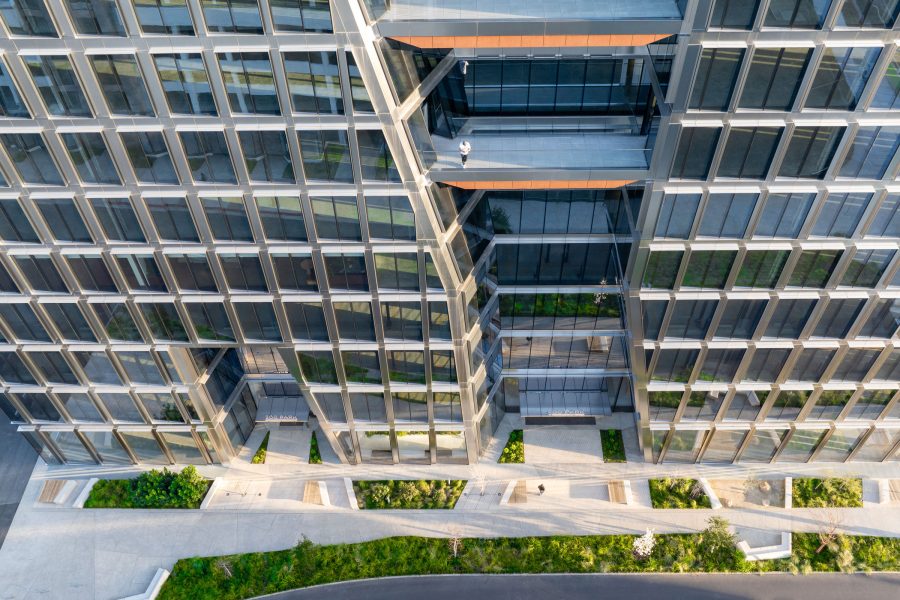
The Gensler-designed 200 Park Avenue features outdoor terraces at every level, coupled with wellness-oriented amenities that allow occupants to balance work and self-care. Photo by Jason O’Rear
Before we begin to explore the wellness economy, let’s take a moment to talk about what “wellness” actually is. The Global Wellness Institute (GWI)—a nonprofit organization dedicated to empowering wellness worldwide—defines wellness as “the active pursuit of activities, choices, and lifestyles that lead to a state of holistic health.”
This definition touches on two very important concepts, the first being that wellness is not a static or passive state of being but something that is actively pursued by individuals. Secondly, wellness is holistic and multidimensional, encompassing both the more conventional concepts of physical and mental wellness as well as the more niche concepts of emotional, social, spiritual, and environmental wellness.
What is the Wellness Economy?

The wellness economy refers to those industries that help consumers incorporate wellness activities and lifestyles into their day-to-day lives. Photo by Celso Rojas
GWI broadly defines the wellness economy as “industries that enable consumers to incorporate wellness activities and lifestyles into their daily lives.” This concept was first put forth in GWI’s 2014 Global Wellness Economy Monitor and marked one of the first times—if not the first time—that wellness was measured as a global industry using both sector- and country-level data.
In this document GWI estimated wellness to be a $3.4 trillion industry in 2013; since then GWI has periodically published updated data on the wellness economy for 2015, 2017, 2019, 2019 to 2022, and 2023, expanding both the depth and breadth of their research with each dataset to include additional wellness sectors.
As of 2023 the global wellness economy has reached $6.3 trillion—the highest it’s ever been—with a predicted annual growth rate of 7.3% from 2023 to 2028. Much of this growth may be attributed to the radical shift in consumers’ prioritization of wellness during and after the Covid-19 pandemic. Increased feelings of stress, anxiety, loneliness, and isolation (among other factors) caused many consumers to go from viewing wellness spending as a luxury to a necessity for maintaining good health and improving mental resilience.
However, the wellness economy’s growth does not inherently correlate to improvements in global health and well-being, as the GWI’s reporting on the wellness economy is primarily concerned with goods and services marketed and sold as “wellness” within their respective consumer marketplaces. This does not mean that said goods and services are essential or even beneficial to wellness, nor does it mean they are scientifically proven to improve health and well-being.
11 Sectors of the Wellness Economy
The GWI’s framework identifies 11 varied and diverse sectors as making up the wellness economy.
1. Wellness Real Estate

The Serenbe wellness community in Chattahoochee, Georgia is an example of wellness real estate. Photo courtesy of Serenbe
Wellness real estate is a category of development in which real estate—that is, the built environment—is designed, built, and managed in such a way as to facilitate, foster, and support those activities, choices, and lifestyles that enable a state of holistic health or wellness. The GWI expands on this, defining wellness real estate as “expenditures on the construction of residential and commercial/ institutional properties (including office, hospitality, mixed-use/ multi-family, medical, and leisure) that incorporate intentional wellness elements in their design, materials, and building, as well as their amenities, services, and/or programming.”
Two other important terms are included under the umbrella of wellness real estate: wellness lifestyle real estate and wellness communities.
- Wellness lifestyle real estate. Describes those homes that have been proactively designed to support the holistic health of their residents
- Wellness communities. Describes groups of people living in close proximity to one another who all share common interests, goals, and experiences when it comes to pursuing wellness at large.
The wellness real estate market has been the fastest-growing sector of the global wellness economy since before the pandemic and was valued at $438.2 billion in 2023. This upward trend may be observed in the increasing number of real estate ventures pursuing—and achieving—some level of certification through wellness-focused building rating programs like WELL and Fitwel.
2. Physical Activity
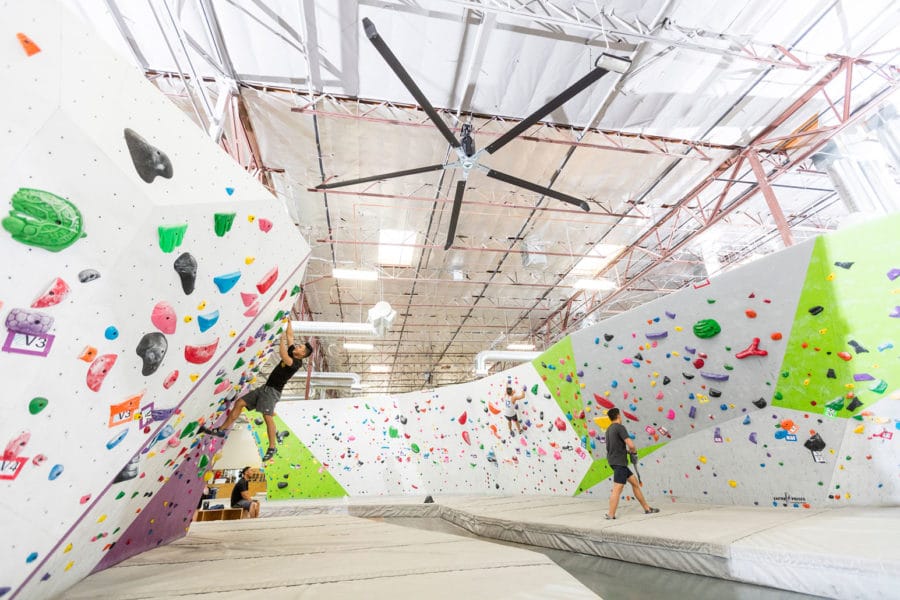
The physical activity sector encompasses expenditures on fitness- and exercise-related technologies, fitness equipment and supplies, and apparel/footwear. Photo courtesy of Entrematic
Physical, movement-based activity is key to maintaining a healthy lifestyle and therefore plays a vital role in the wellness economy. This sector includes consumer spending related to intentional physical activities performed during leisure and recreation, the latter of which the GWI has divided into three recreational activity subsectors—sports and active recreation, fitness, and mindful movement.
- Sports and active recreation. Encompasses a broad range of outdoor sports and recreational activities including running, hiking, cycling, swimming, rock climbing, skiing, and many more.
- Fitness. Includes physical activity performed at gyms and fitness centers as well as during fitness workouts and classes performed at outdoor gyms, community centers, schools, hotels, home-based gyms, and via online platforms.
- Mindful movement. Refers to those activities practiced while paying careful attention to the body’s movements and includes activities like yoga, barre, Pilates, tai chi, qigong, and others.
There are also three enabling subsectors that help to facilitate consumers’ participation in the aforementioned recreational physical activities: fitness- and exercise-related technologies, fitness equipment and supplies, and apparel/footwear. The physical activity market does not include public expenditures on fitness, recreation, and sports facilities/infrastructure; physical activity associated with domestic chores, work, or active transportation; professional sports and dance; or spectator sports and dance.
The physical activity sector experienced a decline at the beginning of the Covid pandemic but quickly rebounded, exceeding pre-pandemic levels by 2021. In 2023 the sector was estimated to be valued at $1059.7 billion and accounted for approximately 16.8% of all wellness economy spending worldwide, making it the third-largest sector overall.
It’s worth mentioning that physical activity spending does not equate to physical activity itself, meaning that higher expenditure in this market does not necessarily indicate that more people are participating in physical activities or that people are doing more physical activity. Indeed, GWI estimates that the current rate of participation in physical activities is still below that of pre-pandemic levels.
3. Mental Wellness
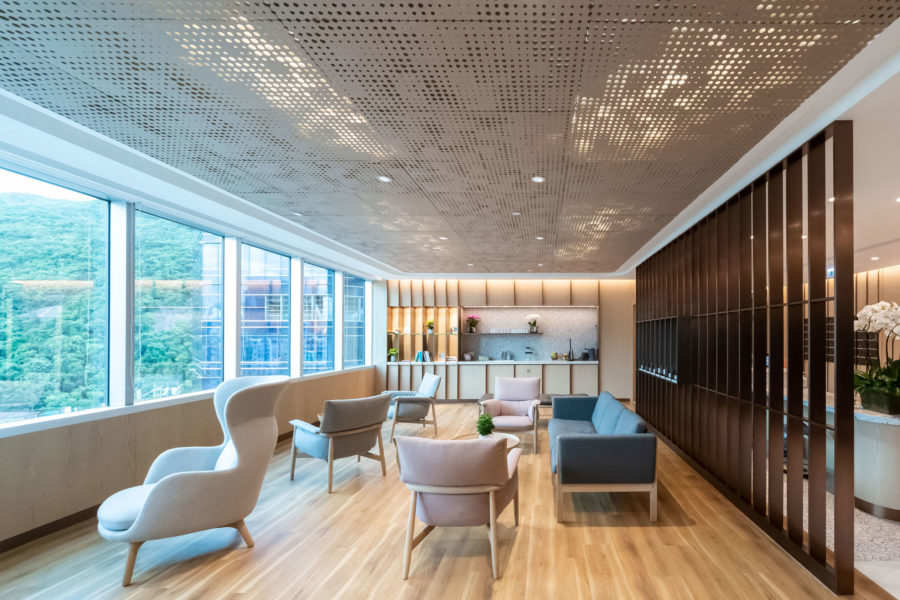
The mental wellness market experienced extreme growth throughout the Covid-19 pandemic. Photo courtesy of Moser Associates
Though it is one of the harder concepts to measure, mental wellness can be best thought of as an active, internal resource that helps individuals grow, flourish, and build resilience by helping them to think, connect, feel, and function in healthy ways. GWI divides mental wellness strategies into four categories—activity and creativity, growth and nourishment, rest and rejuvenation, and connection and meaning—that broadly cover consumers’ options for pursuing mental wellness.
Keeping this in mind, the mental wellness economy may then be defined as consumer expenditures on activities, services, and products whose primary function is to help promote the mental wellness pathways of growth and nourishment and rest and rejuvenation. GWI identifies four sub-sectors within the mental wellness economy:
- Meditation and mindfulness. Includes books, apps, wearable technologies, classes, retreats, and other products/services intended to help consumers meditate and/or practice mindfulness.
- Senses, spaces, and sleep. Encompasses a wide range of products, services, and even designs intended to target the senses, physical spaces, and the mind-body connection so as to improve mood, cognitive functioning, and sleep; certain expenditures in this category may overlap with the aforementioned wellness real estate sector as well as the traditional and complementary medicine sector.
- Self improvement. Includes products, services, and activities geared towards personal development like self-help books; self-help organizations and mutual support groups; brain-training products and services; self-help organizations, institutes, and gurus who offer workshops, seminars, classes, and retreats; self-help apps and online platforms, et cetera.
- Brain-boosting nutraceuticals and botanicals. Includes products that are ingested or otherwise consumed with the intent of improving mental health and well-being, many of which may overlap with the healthy eating, nutrition, and weight-loss and traditional and complementary medicine wellness sectors.
The mental wellness sector was among the least-affected by the pandemic, as the global health scare caused consumers around the world to seek out products and services to cope with their rising stress and anxiety levels. GWI estimates that global mental wellness spending reached $232.6 billion in 2023, increasing by over 50% compared to spending in 2019.
4. Workplace Wellness

To support staff wellness, indoor bike storage is provided to encourage cycling to work. The walk and transit scores of the site are both 100. Photo by Krista Jahnke Photography
In a broad sense the workplace wellness market may be defined as any and all employer expenditures on activities, services, programs, and equipment expressly intended to improve the overall health and wellness of their employees. These expenditures typically focus on providing education, raising awareness, and encouraging employees to adopt healthier lifestyles.
As one might expect, the workplace wellness market was severely impacted at the start of the Covid-19 pandemic as businesses shut down and offices switched to remote work, though it has gradually rebounded over the last several years—as of 2023, the sector had almost recovered to its pre-pandemic spending levels, with GWI estimating total expenditures at $51.77 billion. Despite these upward trends, however, GWI estimates that only about 10% of the workforce actually enjoys access to workplace wellness programs or services.
5. Wellness Tourism
Wellness tourism may be conceptualized as any and all travel—and travel-related expenses—associated with the pursuit of improving or maintaining one’s personal well-being. Depending on how wellness factors into one’s travel plans, wellness tourists are classified by the GWI as either primary or secondary; the former describes travelers whose trip or destination is motivated primarily by wellness, while the latter refers to travelers looking to maintain wellness during their travels or who participate in wellness experiences while on trips for pleasure or business.
It’s important to note that the GWI considers wellness tourism to be separate from medical tourism, or the practice of traveling to another country to receive surgery or dental treatment because it is of a higher quality, is more affordable, or is simply unavailable in one’s home country.
When measuring wellness tourism, GWI includes the expenditures of both international and domestic travelers:
- International wellness tourism. Includes all receipts earned by a country from inbound wellness tourists traveling from abroad and whose visit includes an overnight stay.
- Domestic wellness tourism. Encompasses all expenditures in a country made by wellness tourists traveling within their own country and whose trip includes an overnight stay.
These expenditures include those directly linked to wellness products, services, and activities as well as universal expenses like food, lodging, transportation, and any other goods, services, or experiences a tourist may purchase during their travels.
Like all tourism-related markets, the wellness tourism industry was hit hard by the pandemic and experienced a strong downturn in 2020 when travel restrictions were put in place around the world. The sector has, however, since recovered, with wellness tourism expenditures reaching an estimated $830 billion in 2023.
6. Thermal/Mineral Springs
Swimming and bathing in thermal/mineral springs are age-old activities that have long been practiced in both Europe and the Asia-Pacific region where such water sources are common—and though it makes up a relatively small percentage of the wellness market, the thermal/mineral springs sector is nevertheless an important component of the wellness economy.
GWI defines the thermal/mineral springs industry as those revenue-earning establishments whose services deal with the wellness, recreational, and therapeutic/curative uses of waters boasting special qualities. The vast majority of thermal/mineral spring facilities around the world are rustic and operate in a traditional manner, primarily targeting local markets and charging relatively modest admission fees. In recent years, however, higher-end thermal/mineral spring establishments—that is, businesses that also offer value-added spa services and whose clientele primarily consist of tourists—have soared in popularity, accounting for roughly a quarter of all establishments.
GWI estimates that as of 2023, there were 31,200 thermal/mineral spring establishments operating worldwide, earning approximately $63 billion annually. Revenue is calculated based on expenditures relating to both bathing/swimming and spa/wellness services, as well as earnings from food and beverage, lodging, additional recreational activities, and other services offered by the establishment.
7. Spa Economy
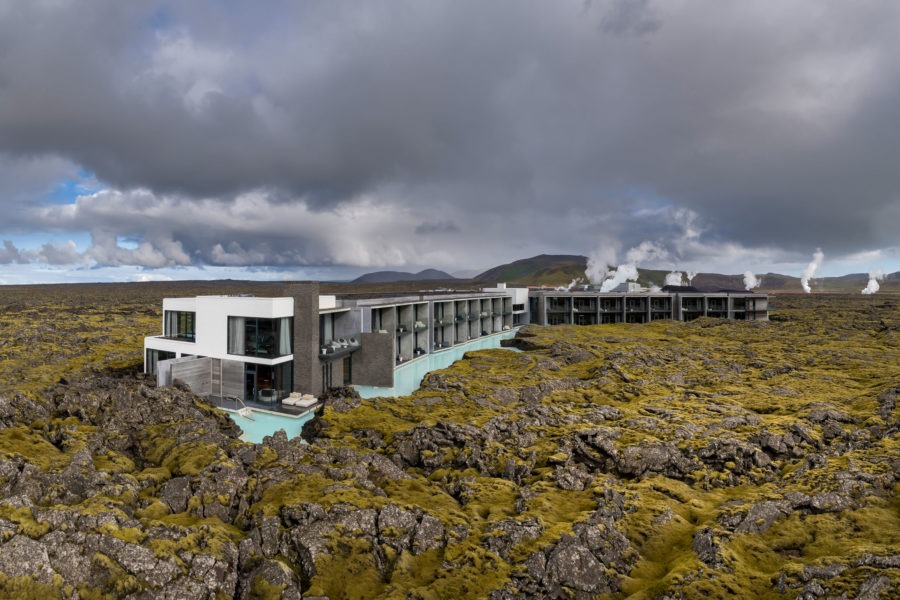
The Blue Lagoon is an otherworldly spa heated by a geothermal energy plant, and it’s many tourists’ first stop in Iceland. Basalt Architects, a leader in green building in Iceland, completed The Retreat at Blue Lagoon in 2018. Photo by Ragnar Th. Sigurdsson
The spa economy encompasses the revenues of spa facilities—or those establishments designed to promote wellness by providing therapeutic and other professional services intended to rejuvenate the body, mind, and spirit—and all related branches of sectors that support or otherwise enable the spa industry. This includes spa education/training for therapists and managers/directors, spa associations, spa consulting services, spa capital investments, and spa-related events and media.
GWI divides spa facilities into the following sub-sectors:
- Day/salon/club spas. The most common types of spas, these businesses typically offer a variety of spa services conducted by trained professionals on a day-use basis; salon spas operate out of facilities that also provide beauty services while club spas operate out of facilities dedicated primarily to fitness.
- Hotel/resort spas. Refers to spas located on a hotel or resort property that provide spa services to hotel and outside/local guests.
- Destination spas and health resorts. These establishments provide full-immersion spa experiences that all guests participate in and often offer a range of additional programs (e.g preventive or curative medical services, energy work, nutritional counseling, special diets and cleanses, et cetera); includes traditional health resorts and sanatoria in Europe that offer thermal water bathing, hydrotherapy, massages, and other spa- like services for wellness/therapeutic purposes.
- Thermal/mineral spring spas. Encompasses the revenue generated by spa- and wellness-related treatments at destination/health resorts and day-use spa facilities that incorporate an on-site source of natural thermal, mineral, or seawater into their spa treatments and any other bathing/recreational springs that offer complementary spa services.
- Medical spas. Describes those spas that operate under the full time, on-site supervision of a licensed health care professional and which provide comprehensive medical/wellness care in a setting that integrates spa services with traditional, cosmetic, or alternative medical treatments/therapies.
- Other spas. Includes any and all spa facilities that do not fall into the categories listed above (e.g. mobile spas, airport spas, cruise ship spas, et cetera).
Due to the in-person nature of spa services, the spa industry was amongst the most negatively impacted sectors of the wellness economy throughout the Covid-19 pandemic, though it has since recovered and surpassed pre-pandemic levels, with the GWI estimating a generation of $136.8 billion in annual revenue as of 2023.
8. Healthy Eating, Nutrition, and Weight Loss

The healthy eating, nutrition, and weight loss sector is the second-largest market in the wellness economy. Photo by Likeness Studio
The healthy eating, nutrition, and weight loss sector encompasses consumer expenditures on an array of foods and beverages marketed, positioned, or otherwise labelled as health- and/or wellness-enhancing, as well as various vitamins, dietary supplements, and weight management products and services. GWI measures expenditures in this market across three sub-sectors:
- Healthy-labeled foods and beverages. Encompasses a wide range of packaged and processed foods/beverages that are explicitly marketed, positioned, or labeled with health and/or wellness claims, including fortified/functional products with added nutrients; low-salt/low-fat/low-sugar products; products that are “free from” dairy/lactose/gluten/meat/allergens; organic products; and products marketed as “naturally healthy.”
- Vitamins and supplements. Includes vitamins and dietary supplements—including herbal/traditional products—and sports nutrition products.
- Weight loss products and services. Encompasses a broad range of over-the-counter supplements/remedies targeting weight management, packaged foods/beverages specifically marketed as targeting weight management and calorie control, and weight loss services/programs.
Counter to most wellness economy markets, the healthy eating, nutrition, and weight loss sector maintained a steady upward growth trajectory during the Covid-19 pandemic; as of 2023, expenditures in this market totaled $1,095.7 and accounted for 17.3% of all wellness spending, making it the second-largest sector in the wellness economy.
It’s important to note that the foods and products included in this sector are not inherently healthy nor do upward trends in this sector necessarily indicate that consumers are eating healthier overall—just that consumers are spending more on products and foods that are labeled as “healthy.”
9. Personal Care & Beauty
In a broad sense the personal care and beauty industry is defined as consumer spending on products and services for personal hygiene and appearance, specifically the care of body, face, skin, nails, and hair. Revenue from this sector includes consumer expenditures on skin, hair, and nail care services; dermatology and prescription pharmaceuticals for skin care; cosmetics, toiletries, and other personal care products; and beauty and salon services (excluding spas). The GWI also notes that products and services which specifically address age-related health and appearance issues—e.g. supplements and pharmaceuticals developed to treat age-related health conditions—also fall under this sector of the wellness economy.
Valued at $1,212.7 billion in 2023, the personal care and beauty sector is by far the largest within the wellness economy, making up 19.2% of all wellness spending globally.
10. Public Health, Prevention, and Personalized Medicine
GWI defines the public health, prevention, and personalized medicine sector as “medical and public health services that focus on treating ‘well’ people, preventing disease, or detecting risk factors. This sector is divided into two sub-sectors, with the first being public health and preventive care.
Expenditures in the public health and preventive care sector encompass both public and private expenditures, with all interventions being classified as either primary or secondary:
- Primary prevention. Refers to those interventions and specific health measures intended to help consumers avoid disease and risk factors so as to reduce the onset of disease, minimize the number of new cases, as well as anticipate the emergence and lessen the severity of diseases.
- Secondary prevention. Includes specific interventions focused on detecting disease and providing early treatment in order to prevent the emergence of symptoms or worsening of said disease.
Personalized medicine, on the other hand, refers to personalized diagnostics and screenings like DNA testing, blood analysis, and microbiome analysis. GWI notes that, while most personalized medicine takes place in a clinical setting, the rise of “medical wellness” services has made it possible for personalized diagnostic services to be offered in a range of non-clinical settings, including wellness clubs, health resorts, destination spas, and more.
Unlike the majority of wellness economy markets, the public health, prevention, and personalized medicine sector saw no decline associated with the Covid-19 pandemic, instead experiencing an explosion of growth as governments around the world scrambled to improve their public health and prevention programs in an effort to curb the virus’ spread. In 2023, the sector had generated $781 billion in spending globally, making it the fifth-largest market in the wellness economy.
11. Traditional & Complementary Medicine
GWI recognizes that not all medicine falls within the accepted scope of conventional Western medicine or the dominant health care system. The traditional and complementary medicine (T&CM) economy encompasses a broad and ever-evolving range of alternative medical practices—including Ayurveda, Traditional Chinese Medicine, naturopathic, homeopathic, chiropractic, herbal remedies, energy healing, et cetera—used around the world.
T&CM expenditures are measured across two sub-sectors:
- Services and practitioners. Encompasses those expenditures related to T&CM services offered by hospitals and clinics, traditional healers, business establishments, spas, and other wellness providers.
- Medicines and products. Includes consumer expenditures on a wide variety of traditional/herbal medicines, remedies, and products—such as those associated with Ayurveda, Traditional Chinese Medicine, naturopathy, and other Indigenous systems—as well as phytomedicines (e.g. CBD, cannabis, medicinal mushrooms, et cetera).
Many definitions of T&CM include massage, meditation, and mind-body practices like yoga and tai chi as part of T&CM practices, but GWI excludes expenditures related to these activities from their estimates on the basis that they are specifically captured in other wellness economy sectors. GWI’s measurement of T&CM medicines and products also excludes revenue from dietary supplements and functional foods/beverages infused with herbs and botanicals, as such products are covered under the healthy eating, nutrition, and weight loss sector.
Like many wellness economy sectors that rely heavily on in-person interactions, the T&CM market experienced an initial decline in 2020 as businesses shut down and consumers postponed non-critical medical services in response to the pandemic. In the long term however, the pandemic actually helped boost demand for T&CM products and services, with GWI estimating a $553.0 billion global market value as of 2023.

